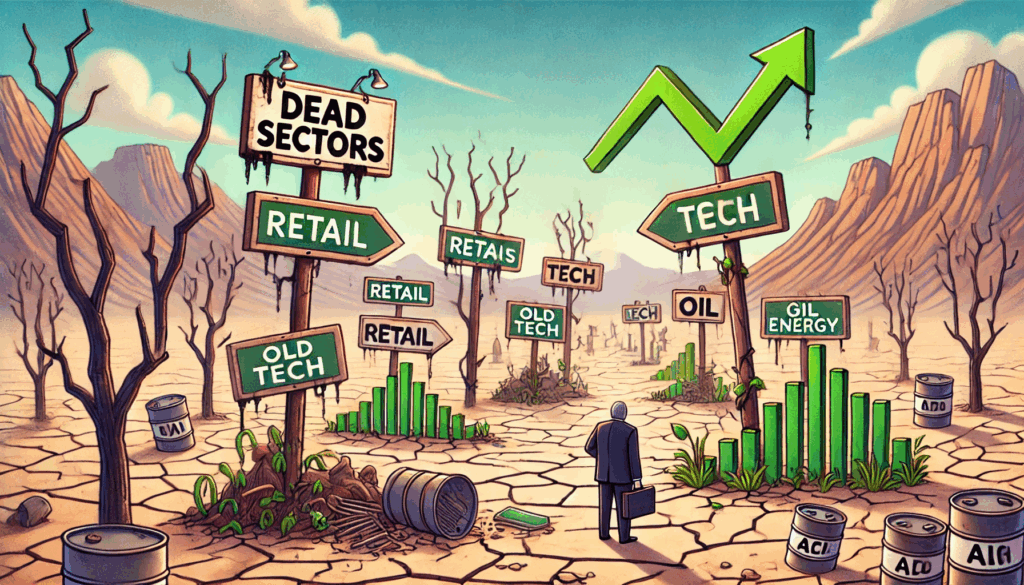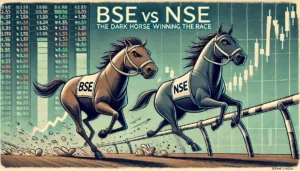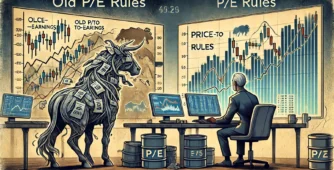Real Estate vs Nifty – A Tale of Two Trends
From 2008 to 2020, the Real Estate index and Nifty exhibited very different trends. In 2008, the real estate index was rising quickly, appearing strong and active. However, it then experienced a sharp decline of approximately 70-80%, or even more. After this drop, it remained flat for nearly a decade, with no significant movement in the real estate sector during that long period. In contrast, Nifty continued to grow steadily during those years.
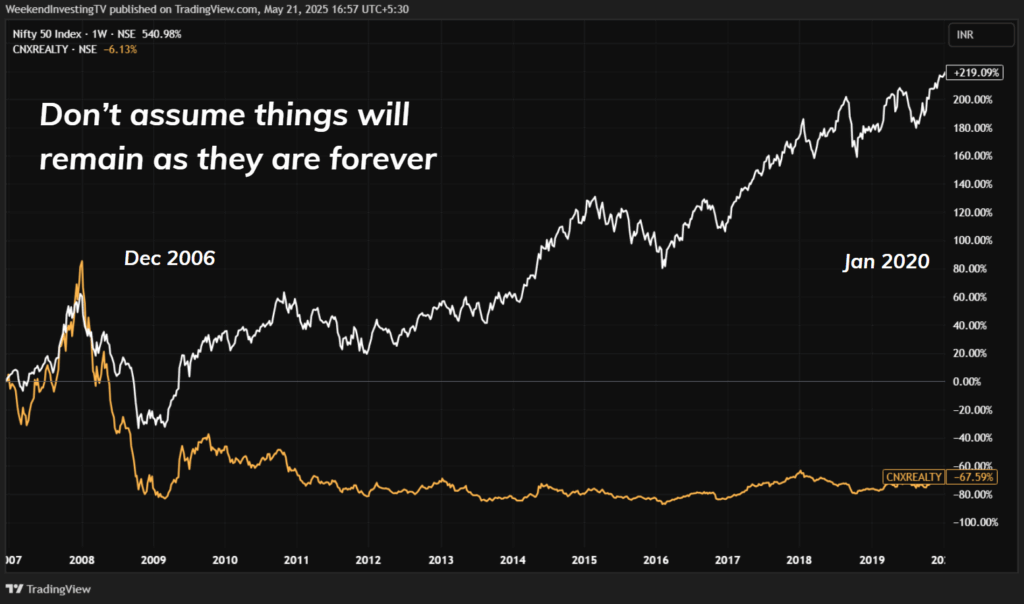
When Real Estate Started Moving Again
Around 2020, real estate finally began to show some movement again. Initially, it moved in tandem with Nifty, but soon it gained momentum and started rising even faster. From that point onward, real estate experienced a remarkable rally. While Nifty recorded a growth of 188%, the real estate index surged by around 450%. This significant increase came after nearly ten years of stagnation.
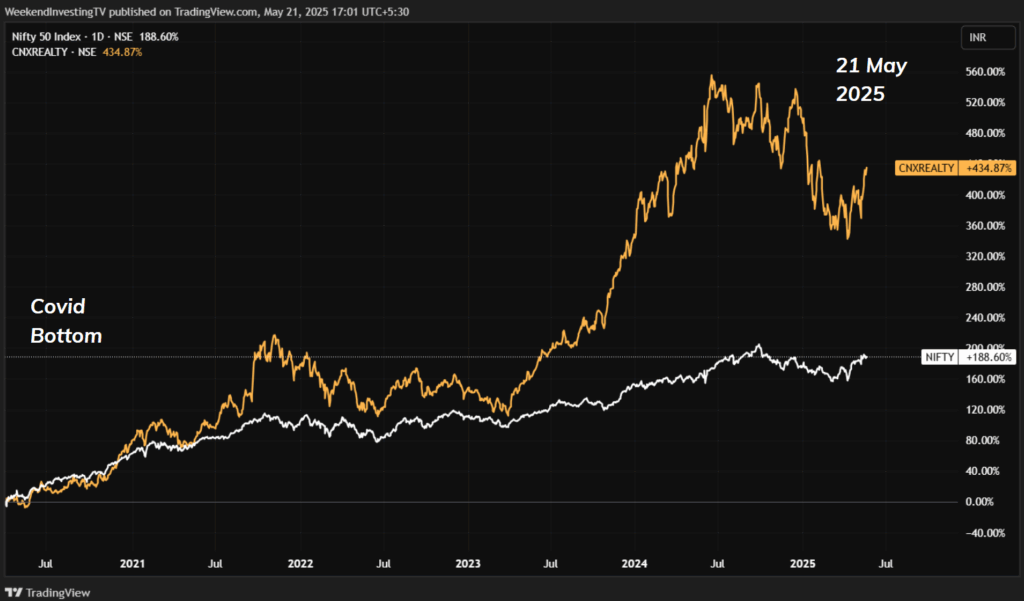
The Risk of Holding Dead Assets
This situation highlights an important lesson: if a sector remains unproductive for many years, there is little benefit in holding onto it. Even if a sector appears cheap or full of potential, it may still remain stagnant for a long time. For instance, if someone had invested 20-25% of their money in real estate during that period and held it for a decade, they would have seen no growth. When the sector finally began to rise, they might not have maintained their investment long enough to reap the rewards of the rally.
Diversify, But with Caution
Many investors believe that diversifying their investments across multiple sectors is a safe strategy; however, this can be risky if that money is tied up in sectors that aren’t growing. Just because an investment is expected to rise “someday” doesn’t guarantee it will. Investing based on hopes and guesses is not a wise approach. If you buy a stock at its lowest point and it remains stagnant for ten years, your capital will be locked up while Nifty could triple during the same period, leading you to miss out on those gains.
Stick to Strong Trends
The best strategy is to invest in assets and sectors that are already showing strong trends. Compare various sectors and select the ones that are performing best. Investing in stagnant stocks, sectors, or trends can negatively impact long-term returns. There is no advantage in holding onto an investment simply because it might perform well one day.
Always follow strong trends and steer clear of weak or stagnant sectors. Don’t risk your money waiting for uncertain outcomes. Choose active sectors over inactive ones.
What do you think about this idea? Share your thoughts in the comments below! If you found this blog helpful, don’t forget to SHARE it with your friends!
WeekendInvesting launches – The Momentum Podcast
This episode of THE MOMENTUM PODCAST features Manubhav, a third-generation real estate professional, sharing his unique journey navigating both worlds.
Discover:
✅ FROM PROPERTY TO PORTFOLIO: Manubhav’s transition from his family’s established real estate business to exploring equity investments.
✅ MARKET WISDOM: His candid experiences with market swings, including COVID-19’s impact on his SIPs, and lessons learned from F&O and smallcase.
✅ THE BIG COMPARISON: A fascinating look at real estate vs. equity returns, featuring real-world numbers from his family’s 40-year property investment.
✅ UNCOMMON INSIGHTS: Why gold is a family favorite and the surprising state of equity investing in smaller Indian towns.

